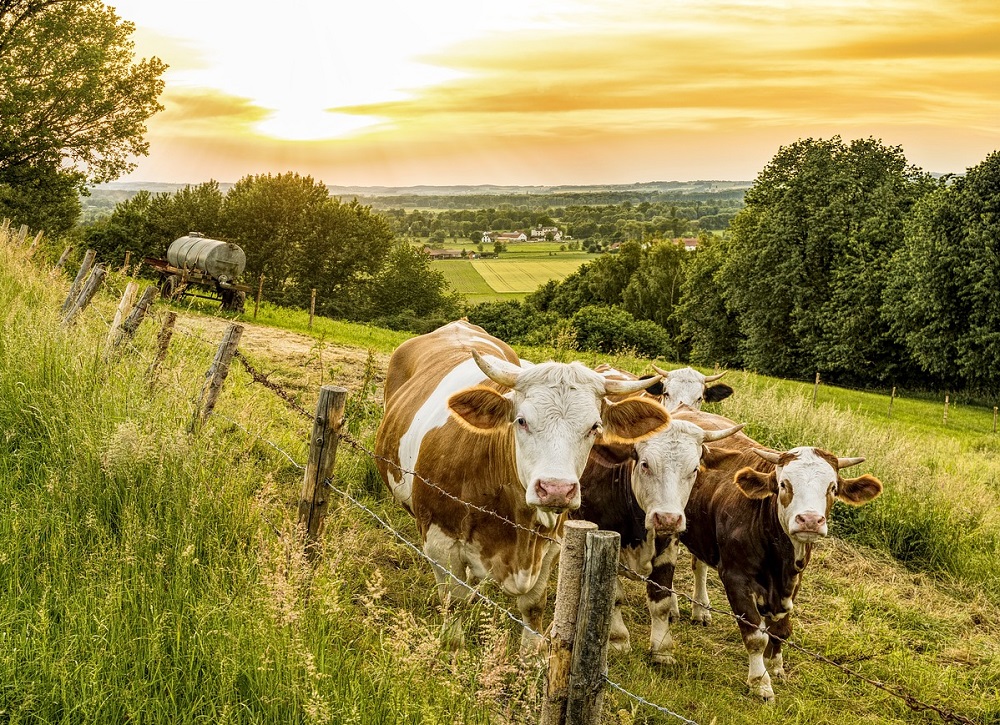Different GHGs have different impacts on climate

Methane is the second largest contributor to warming after CO2. However, assessing the significance of methane as a greenhouse gas is more complicated than for CO2, according to the recent paper published by the Animal Task Force (ATF).
Methane accounts for 14% of global greenhouse gas emissions, responsible for about 30% of the increase in global temperature. Approximately 41% of global methane emissions come from natural sources like wetlands, biomass burning and other sources, such as wild ruminants, termites, oceans and permafrost. The remaining 59% comes from anthropogenic sources. Among them, agriculture accounts for more than 40%. The EU is responsible for just 5% of global anthropogenic methane emissions.
This is a lot of interesting data, but alone, it doesn’t really tell us what this means in terms of environmental impacts. This is why large reductions in livestock numbers are often pitched as the easy fix to our climate problems.
First of all, the data out of context will not take into account that ruminant systems can remove CO2 from the atmosphere through soil carbon sequestration under grassland and associated agroecological infrastructures. Secondly, the numbers alone don’t tell us that methane emissions are different to CO2. But many scientists have warned us of the differences, notably the short life of methane. This is an important fact: even if methane is a potent GHG, it is short-lived, with a half-life of 10 years.
It is precisely for this reason that we need to take all the facts into account and not just look at the data in vacuum. Scientists have discovered that Global Warming Potential GWP100 is not a good metric to assess how methane contributes to warming. These scientists propose Global Warming Potential (GWP*) as an alternative metric as it better accounts for the effect of the short life of methane on temperature. In comparison, CO2 has a very long lifetime, and it will take thousands of years for CO2 levels to return to pre-industrial levels naturally. The negative impact of CO2 will only stop increasing when CO2 emissions are reduced to net zero.
As highlighted in the ATF paper, the IPCC 6th Assessment Report clearly states that CO2 emissions need to be reduced to net zero to limit human-induced global warming. In contrast, it does not call for methane or nitrous oxide emissions to be reduced to net zero. This implies that separate targets are needed for CO2, methane and nitrous oxide. The target for CO2 must be net zero emissions as soon as possible, while methane emissions do not have to reach net zero to stop further warming. It is clear that the different GHGs must be treated differently.
Moreover, we should note that methane is divided into two types for assessing its warming potential: biogenic methane and methane from fossil fuels. Biogenic methane is produced by plants and animals due to carbon recycling in the carbon cycle. In other words, it comes from CO2 already in the atmosphere. Methane from fossil fuels comes from a source deep in the earth for millions of years. When burned for energy, it adds CO2 in the atmosphere. This difference is recognised by scientists in the Global Warming Potentials assigned to the two types of methane: the GWP100 of fossil and non-fossil methane are 29.8 and 27, respectively.
The scientists highlight that reductions in methane from the energy sector should be prioritised, aligning with plans for the energy sector to reduce its dependence on fossil fuels. The EU Methane Strategy indicates that energy is where emissions can be cut the fastest with the least costs. There is also a need to reduce methane from waste, and minimising the amount of biodegradable waste going into landfills will help avoid methane formation from this source.
Of course, methane from agriculture should also be reduced as much as possible, but in a way that does not threaten food production. Some methane emissions from livestock cannot be avoided as they result from ruminants being able to convert non-edible feeds into highly nutritious food products. This should not be overlooked as it demonstrates how agricultural methane emissions are particularly complex to reduce, as they are mainly linked to natural processes. No technologies exist currently to reduce enteric emissions to zero, but the EU Methane Strategy identifies a few strategies to reduce agricultural emissions: improvement of animal diets, herd management, manure management (notably its use in fertilisers and biogas generation), breeding, herd health and animal welfare, and carbon farming. We must not overlook the fact that livestock not only provides food and nutrition, but also provides important ecosystem services, and contributes to other production such as leather, fur, wool and energy from biomethane. As the Animal Task Force recommends, developing methane mitigation options should be a high priority for EU research and innovation activity, and appropriate reduction target for agricultural methane should be assessed using the scientific basis that accounts for the short-lived nature of methane.